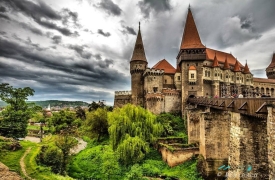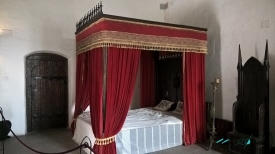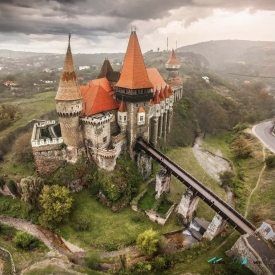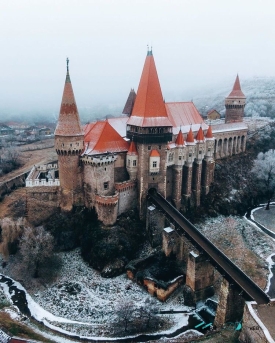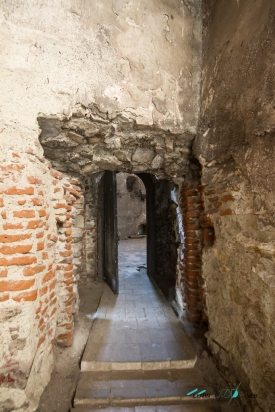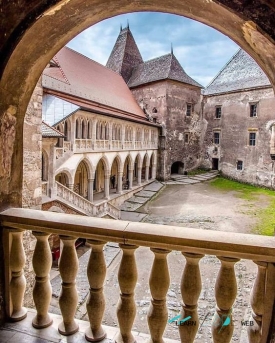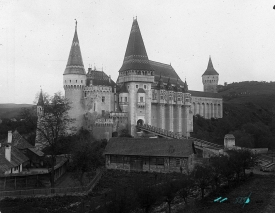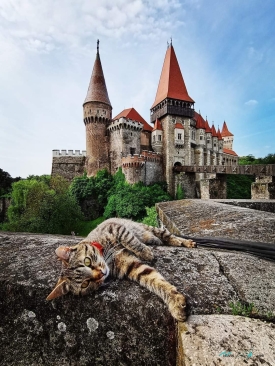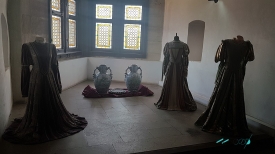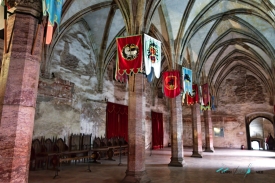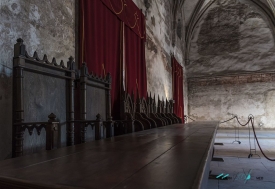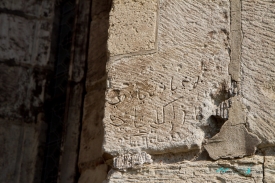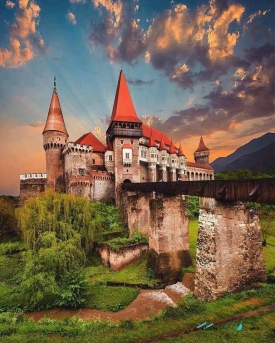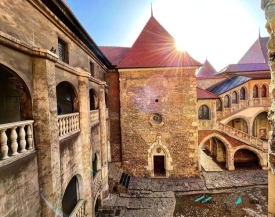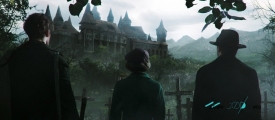Built in the 14th century, on the site of an ancient fortification, in Hunedoara County, Transylvania, on a rock at the foot of which the Zlasti stream flows, the castle covers an area of about 7,000 square meters. A large moat encloses the castle on the east and south sides. It is one of the tallest buildings in the region. It preserves red slate roofs, and other colors, with towers and turrets, windows and balconies decorated with carved stone lace.
Some castle structures retain the original Gothic style, but Renaissance and Baroque elements were added in later centuries. Its strong defensive towers and its central garden stand out.
Although it maintains its castle-fortress functions, taking advantage of its geography, it also becomes a lavish residence. Over the years, the different lords of the castle changed its appearance, enriching it with towers, halls and rooms of honor. The gallery and the keep - the last defense tower (the "Ne boisa" tower = Do not be afraid), remained unchanged from the time of Ioan of Hunedoara, as well as the Capistrano Tower (named after a famous monk of the castle courtyard) represent some of the most significant parts of the construction. We can also mention the Salón de los Caballeros (a large reception room), the Torre de las Mazas and the Baluarte Blanco that served as a food store, the Salón de la Dieta, with medallions painted on the walls, among them are the Portraits of Matei Basarab, ruler of the Principality of Wallachia, and Vasile Lupu, of the Principality of Moldavia. In the wing of the castle called Matia, one can still see, rather vaguely, a painting that refers to the legend with the raven from which the descendants of Ioan of Hunedoara (Corvini) are said to take their name.
In the courtyard of the castle, next to the chapel also built in the time of Ioan of Hunedoara, there is a well 30 meters deep. According to legend, this well was dug by three Turkish prisoners, who were promised freedom if they reached the layer of water. But after 15 years of hard work, when the well was finished, the owners did not keep their word. The inscription on the wall of the fountain was said to mean "You have water, but no soul." In reality, the content deciphered by the specialists is: "The one who wrote this inscription is Hasan, who lives as a slave to the beasts, in the fortress near the church."
The castle was under the rule of the Austro-Hungarian Empire from 1724 until the fall of the empire in 1918. The territories comprising Transylvania were annexed by the Kingdom of Romania. Today there is a museum in the building. The castle is also used as a movie set. A large number of Romanian and international film productions were filmed on the castle grounds.
Vajdahunyad Castle, built in 1896 in the city park of the Hungarian capital, Budapest, is an imitation of Hunyad Castle. The Hungarian master builder, Ignác Alpár built the current stone castle. The main part of the structure was inspired by the Hunedoara Castle. Among other things, the Njeboisa Tower and the elaborately decorated Gothic towers were copied.
Some castle structures retain the original Gothic style, but Renaissance and Baroque elements were added in later centuries. Its strong defensive towers and its central garden stand out.
Although it maintains its castle-fortress functions, taking advantage of its geography, it also becomes a lavish residence. Over the years, the different lords of the castle changed its appearance, enriching it with towers, halls and rooms of honor. The gallery and the keep - the last defense tower (the "Ne boisa" tower = Do not be afraid), remained unchanged from the time of Ioan of Hunedoara, as well as the Capistrano Tower (named after a famous monk of the castle courtyard) represent some of the most significant parts of the construction. We can also mention the Salón de los Caballeros (a large reception room), the Torre de las Mazas and the Baluarte Blanco that served as a food store, the Salón de la Dieta, with medallions painted on the walls, among them are the Portraits of Matei Basarab, ruler of the Principality of Wallachia, and Vasile Lupu, of the Principality of Moldavia. In the wing of the castle called Matia, one can still see, rather vaguely, a painting that refers to the legend with the raven from which the descendants of Ioan of Hunedoara (Corvini) are said to take their name.
In the courtyard of the castle, next to the chapel also built in the time of Ioan of Hunedoara, there is a well 30 meters deep. According to legend, this well was dug by three Turkish prisoners, who were promised freedom if they reached the layer of water. But after 15 years of hard work, when the well was finished, the owners did not keep their word. The inscription on the wall of the fountain was said to mean "You have water, but no soul." In reality, the content deciphered by the specialists is: "The one who wrote this inscription is Hasan, who lives as a slave to the beasts, in the fortress near the church."
The castle was under the rule of the Austro-Hungarian Empire from 1724 until the fall of the empire in 1918. The territories comprising Transylvania were annexed by the Kingdom of Romania. Today there is a museum in the building. The castle is also used as a movie set. A large number of Romanian and international film productions were filmed on the castle grounds.
Vajdahunyad Castle, built in 1896 in the city park of the Hungarian capital, Budapest, is an imitation of Hunyad Castle. The Hungarian master builder, Ignác Alpár built the current stone castle. The main part of the structure was inspired by the Hunedoara Castle. Among other things, the Njeboisa Tower and the elaborately decorated Gothic towers were copied.



